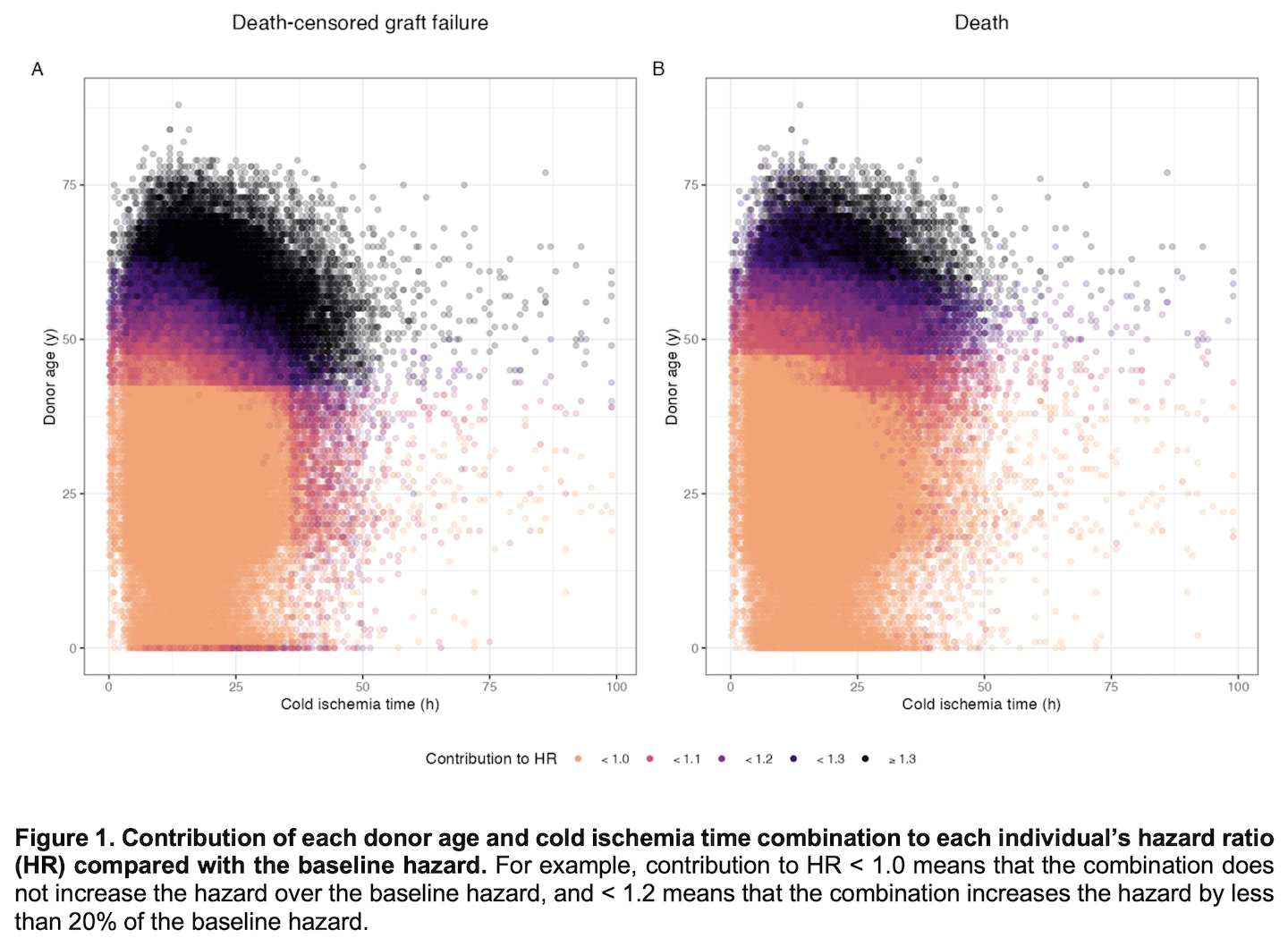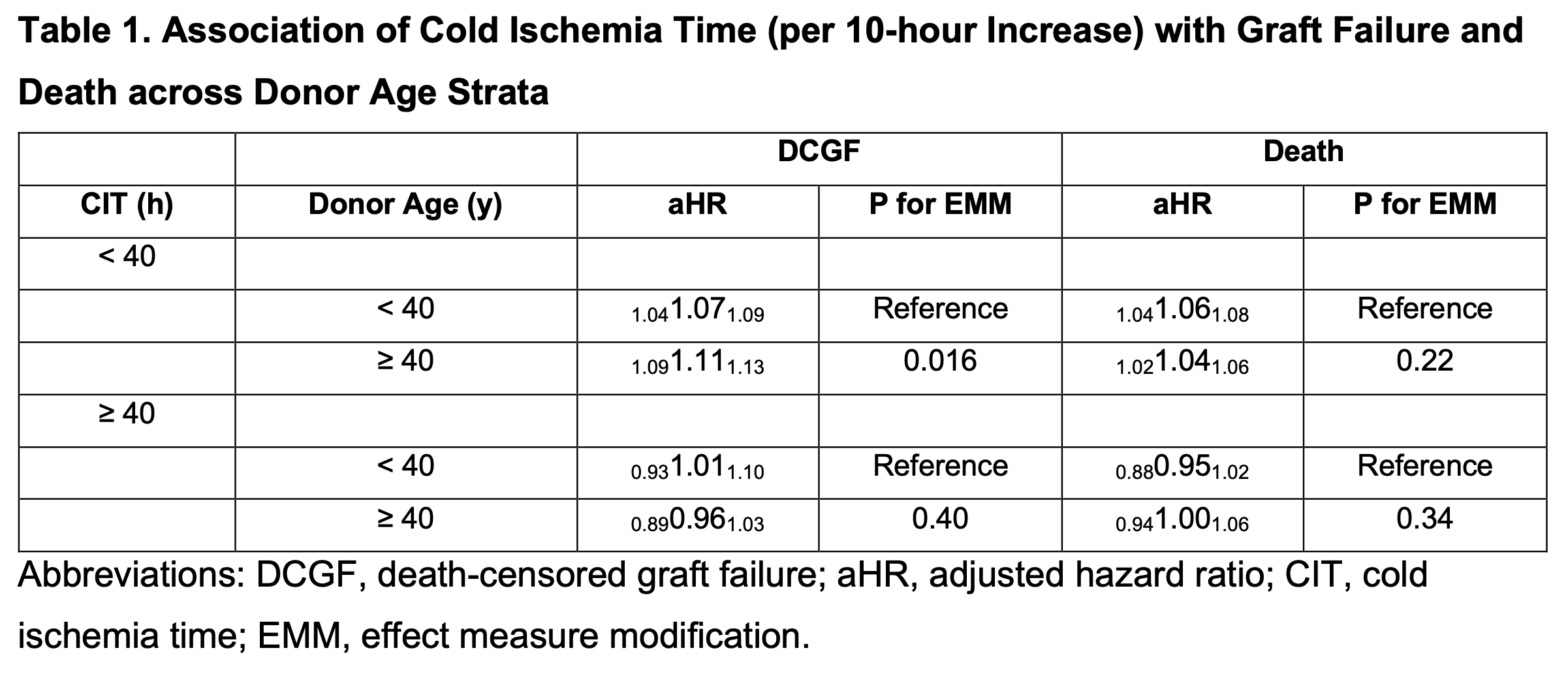Cold Ischemia Time is More Critical for Older Donor Kidney Survival: A Machine Learning Approach
Johns Hopkins, Baltimore, MD
Meeting: 2022 American Transplant Congress
Abstract number: 703
Keywords: Graft survival, Ischemia, Kidney transplantation, Mortality
Topic: Clinical Science » Kidney » 31 - Kidney Deceased Donor Allocation
Session Information
Session Name: Kidney Deceased Donor Allocation
Session Type: Poster Abstract
Date: Saturday, June 4, 2022
Session Time: 5:30pm-7:00pm
 Presentation Time: 5:30pm-7:00pm
Presentation Time: 5:30pm-7:00pm
Location: Hynes Halls C & D
*Purpose: Increasing utilization of kidneys from older donors is a potential solution to mitigate the organ shortage. However, older donor age is a risk factor for worse kidney transplant (KT) outcomes, whose impact might be amplified by other modifiable risk factors such as cold ischemia time (CIT). Using machine learning, we sought to characterize the interaction between donor age and CIT and to identify donor age strata with greater susceptibility to longer CIT.
*Methods: Using SRTR 2005-2019, we studied adult (≥18y) kidney-only deceased donor KT recipients. We quantified the contribution of each CIT-donor age combination to the hazard of death-censored graft failure (DCGF) and death using XGBoost. Contribution was measured in hazard ratios (HR) compared to the baseline hazard. The statistical interactions identified in these analyses were further tested with Cox proportional hazard models after adjusting for various donor, recipient, and transplant factors.
*Results: This analysis included 161,872 KT recipients. For DCGF, longer CIT was more detrimental in older (≥40y) donors than in younger donors, but the interaction was less pronounced for death (Figure 1). This interaction was statistically significant in the Cox models (Table 1). For example, per 10-hour increase in CIT (<40h), the hazard of DCGF increased by 1.11-fold (95% CI, 1.09-1.13) in older (≥40y) donors, but 1.07-fold (95% CI, 1.04-1.09) in younger donors (interaction p=0.016). There was no significant increase in the hazard of DCGF and death when CIT was longer than 40 hours.
*Conclusions: Longer CIT might have a greater impact on graft survival when combined with older donor age (e.g., ≥40y). Our findings support prioritizing kidneys from older donors to local candidates whose CIT are expected to be shorter.
To cite this abstract in AMA style:
Kim J, Ahn J, Massie A, Segev D, Bae S. Cold Ischemia Time is More Critical for Older Donor Kidney Survival: A Machine Learning Approach [abstract]. Am J Transplant. 2022; 22 (suppl 3). https://atcmeetingabstracts.com/abstract/cold-ischemia-time-is-more-critical-for-older-donor-kidney-survival-a-machine-learning-approach/. Accessed December 15, 2025.« Back to 2022 American Transplant Congress


